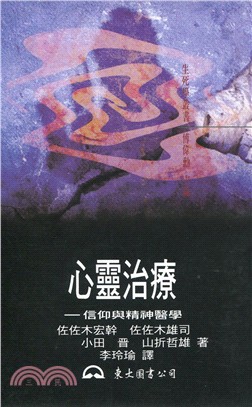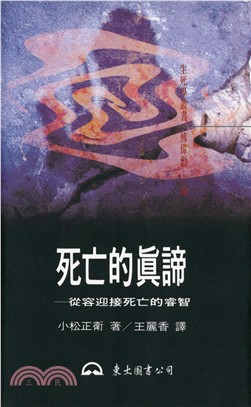MOLECULAR ELECTRONICS - FROM PRINCIPLES TO PRACTICE
商品資訊
商品簡介
作者簡介
Michael Petty graduated from the University of Sussex with a BSc (First Class Honours) in Electronics. He subsequently obtained his PhD from Imperial College, University of London for work on the electrical and optical properties of semiconducting inorganic thin films. More recently, his research activities have expanded to encompass thin films, in particular Langmuir-Blodgett films, of organic materials. He has a special interest in the application of such thin layers to electronic and opto-electronic devices. Professor Petty has lectured extensively worldwide and published over 250 papers in these subjects. In 1994, he was awarded the DSc degree from the University of Sussex.
Professor Petty is the UK editor of the Elsevier Journal of Materials Science and Engineering C and Co-Director of the Durham Centre for Molecular and Nanoscale Electronics. He was Chairman of the School of Engineering at Durham University from Jan 1997 to Aug 2000.
目次
Preface.
Acknowledgements.
Symbols and Abbreviations.
Chapter 1: Scope of Molecular Electronics.
1.1 Introduction.
1.2 Molecular materials for electronics.
1.3 Molecular-scale electronics.
1.4 The biological world.
1.5 Future opportunities.
1.6 Conclusions.
Bibliography.
References.
Chapter 2: Materials’ Foundations.
2.1 Introduction.
2.2. Electronic structure.
2.3 Chemical bonding.
2.4 Bonding in organic compounds.
2.5 Crystalline and noncrystalline materials.
2.6 Polymers.
2.7 Soft matter: emulsions, foams and gels.
2.8 Diffusion.
Bibliography.
References.
Chapter 3: Electrical Conductivity.
3.1 Introduction.
3.2 Classical theory.
3.3 Energy bands in solids.
3.4 Organic compounds.
3.5 Low frequency conductivity.
3.6 Conductivity at high frequencies.
Bibliography.
References.
Chapter 4: Optical Phenomena.
4.1 Introduction.
4.2 Electromagnetic radiation.
4.4 Interaction of EM waves with organic molecules.
4.5 Transmission and reflection from interfaces.
4.6 Waveguiding.
4.7 Surface plasmons.
4.8 Photonic crystals.
Bibliography.
References.
Chapter 5: Electroactive Organic Compounds.
5.1 Introduction.
5.2 Selected topics in chemistry.
5.3 Conductive polymers.
5.4 Charge-transfer complexes.
5.5 Buckyballs and nanotubes.
5.6 Piezoelectricity, pyroelectricity and ferroelectricity.
5.7 Magnetic materials.
Bibliography.
References.
Chapter 6: Tools for Molecular Electronics.
6.1 Introduction.
6.2 Direct imaging.
6.3 X-ray reflection.
6.4 Neutron reflection.
6.5 Electron diffraction.
6.6 Infrared spectroscopy.
6.7 Surface analytical techniques.
6.8 Scanning probe microscopies.
6.9 Film thickness measurements.
Bibliography.
References.
Chapter 7: Thin Film Processing and Device Fabrication.
7.1 Introduction.
7.2. Established deposition methods.
7.3 Molecular architectures.
7.4 Nanofabrication.
Bibliography.
References.
Chapter 8: Liquid Crystals and Devices.
8.1 Introduction.
8.2 Liquid crystal phases.
8.3 Liquid crystal polymers.
8.4 Display devices.
8.5 Ferroelectric liquid crystals.
8.6 Polymer dispersed liquid crystals.
8.7 Liquid crystal lenses.
8.8 Other application areas.
Bibliography.
References.
Chapter 9: Plastic Electronics.
9.1 Introduction.
9.2 Organic diodes.
9.3 Metal-insulator-semiconductor structures.
9.4 Field effect transistors.
9.5 Integrated organic circuits.
9.6 Organic light-emitting displays.
9.7 Photovoltaic cells.
9.8 Other application areas.
Bibliography.
References.
Chapter 10: Chemical Sensors and Actuators.
10.1 Introduction.
10.2 Sensing systems.
10.3 Definitions.
10.4 Chemical sensors.
10.5 Biological olfaction.
10.6 Electronic noses.
10.7 Physical sensors and actuators.
10.8 Smart textiles and clothing.
Bibliography.
References.
Chapter 11: Molecular-Scale Electronics.
11.1 Introduction.
11.2 Nanosystems.
11.3 Engineering materials at the molecular level.
11.4 Electronic device architectures.
11.5 Molecular rectification.
11.6 Electronic switching and memory devices.
11.7 Single electron devices.
11.8 Optical and chemical switches.
11.9 Nanomagnetic systems.
11.10 Nanotube electronics.
11.11 Molecular actuation.
11.12 Logic circuits.
11.13 Computing architectures.
11.14 Quantum computing.
Bibliography.
References.
Chapter 12: Bioelectronics.
12.1 Introduction.
12.2 Biological building blocks.
12.3 Nucleotides.
12.4 Cells.
12.5 Genetic coding.
12.6 The biological membrane.
12.7 Neurons.
12.8 Biosensors.
12.9 DNA electronics.
12.10 Photobiology.
12.11 Molecular motors.
Bibliography
References.
Index.
主題書展
更多書展本週66折
您曾經瀏覽過的商品
購物須知
外文書商品之書封,為出版社提供之樣本。實際出貨商品,以出版社所提供之現有版本為主。部份書籍,因出版社供應狀況特殊,匯率將依實際狀況做調整。
無庫存之商品,在您完成訂單程序之後,將以空運的方式為你下單調貨。為了縮短等待的時間,建議您將外文書與其他商品分開下單,以獲得最快的取貨速度,平均調貨時間為1~2個月。
為了保護您的權益,「三民網路書店」提供會員七日商品鑑賞期(收到商品為起始日)。
若要辦理退貨,請在商品鑑賞期內寄回,且商品必須是全新狀態與完整包裝(商品、附件、發票、隨貨贈品等)否則恕不接受退貨。
























